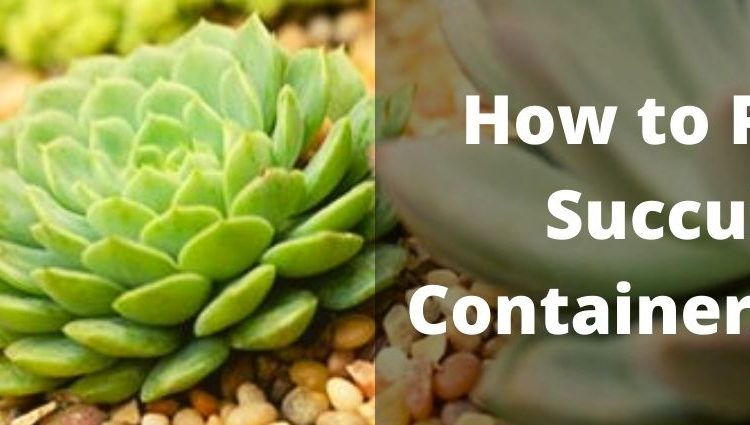Succulents are most commonly identified with extremely hot, dry climates. Fleshy leaves enable the plants to preserve water and survive and thrive in these conditions. These same characteristics also make succulents perfect for interesting and attractive container gardens no matter what the climate. In colder climates containers can be brought in during the winter months. The heat and dry air of homes may stress other houseplants, but succulents do well in this environment.
Suitable Containers and Soil for Succulents
 Succulents are more sensitive to overwatering than under watering. Therefore, choosing the right container for planting is important for success. Because succulents have such low water needs, containers that are small or shallow are good for succulents. Terra cotta containers are an excellent choice. Terra cotta is porous which allows excess water to evaporate quickly through the sides of the container. Terra cotta strawberry jars or multi-opening herb containers make interesting succulent gardens. Any container used must have excellent drainage.
Succulents are more sensitive to overwatering than under watering. Therefore, choosing the right container for planting is important for success. Because succulents have such low water needs, containers that are small or shallow are good for succulents. Terra cotta containers are an excellent choice. Terra cotta is porous which allows excess water to evaporate quickly through the sides of the container. Terra cotta strawberry jars or multi-opening herb containers make interesting succulent gardens. Any container used must have excellent drainage.
Check Out: Building the Perfect Container Garden
Soil is crucial to achieve thriving succulents. Succulent and cactus soil mix, available at garden centers, is ideal for container gardens. If gardeners prefer to mix their own soil, this is easily done. Use one part regular potting soil, one part peat and one part non-organic material such as perlite, crushed granite or small gravel. Soil should be crumbly and not form clumps.
 Choosing Succulents for Container Gardening
Choosing Succulents for Container Gardening
The same rules apply to succulent containers as other container gardens. Use a mix of textures, colors and shapes when choosing plants. Also, choose succulents with different growth habits and size. Taller, upright plants make good focal points to plan designs around. Smaller, mounding plants are good for filling out containers. Trailing succulents work nicely on edges or in strawberry jars.
Many succulents may be placed together in a special section in the greenhouse. There are many varieties of sedum, crassula, jade, aloe and kalanchoe. Also, check the perennial and annual sections of the greenhouse for other sedum, sepervivum (hen and chicks) and purselane among others.
 Planting Succulents in a Container Garden
Planting Succulents in a Container Garden
Use a broken piece of pottery or a coffee filter to prevent soil from clogging the drainage hole and also to hold in gravel. Cover the bottom of the container with about an inch of gravel or pea rock. This will help with drainage. Fill the container about ¾ full of potting mix. If using a strawberry pot, fill the container up to the first set of openings.
Check Out: Guide to Planning a Low Maintenance Landscape
Place plants in the desired position. Experiment with placement and combinations to get the best look possible. Be mindful of plant growth habits. Avoid putting tall plants in front of short plants or trailing plants in the center of a container. Once the plants are satisfactorily placed, add more soil to fill the container and hold the plants in place. Use colored stones, gravel, beach glass or other decorative mulch to complete the container.
Succulents are unusual in that they should not be watered immediately after transplanting. Place the container in a sunny spot. Wait a day or two and water lightly the first time. Overwatering will rot the roots of the plants. Thereafter, check plants weekly and water thoroughly when the soil is completely dry.
It’s easy to create and maintain a succulent container garden for indoors or out. These easy-care, low-water beauties are sure to find a place on any gardener’s wish list.



Comments are closed, but trackbacks and pingbacks are open.